Shrinkage-Considered Mold Design for Improvement of Micro/Nano-Structured Optical Element Performance
Abstract
1. Introduction
2. Materials and Methods
2.1. Fabrication of Master Mold
2.2. Fabrication of Working Stamp Master (WSM) and Final Product
2.3. Measurements
3. Results and Discussion
3.1. Size Reduction by Shrinkage
3.2. Shape Change by Shrinkage
3.3. Total Shrinkage
3.4. Optical Performance with Shrinkage Compensation
4. Conclusions
Author Contributions
Funding
Acknowledgments
Conflicts of Interest
Appendix A

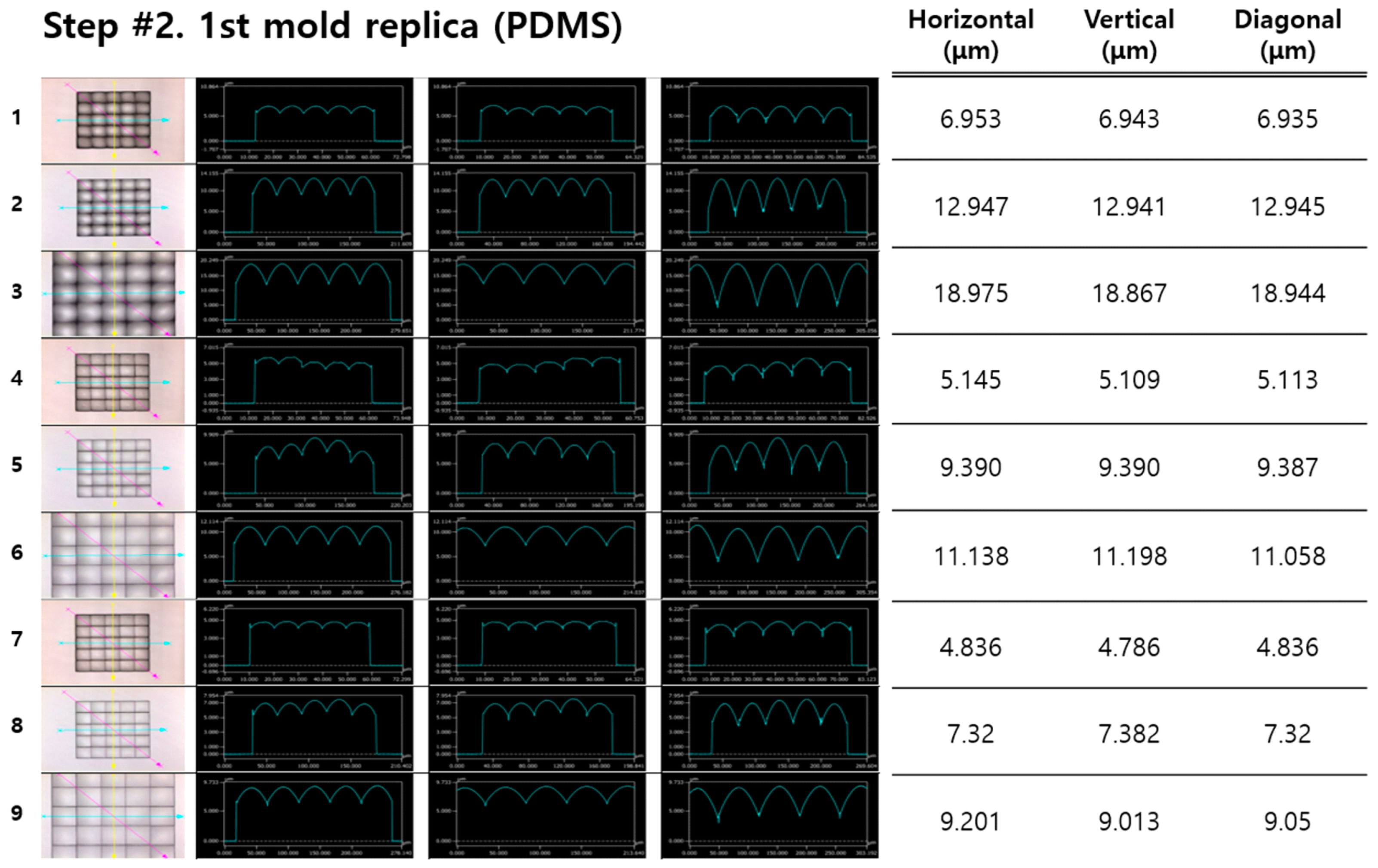
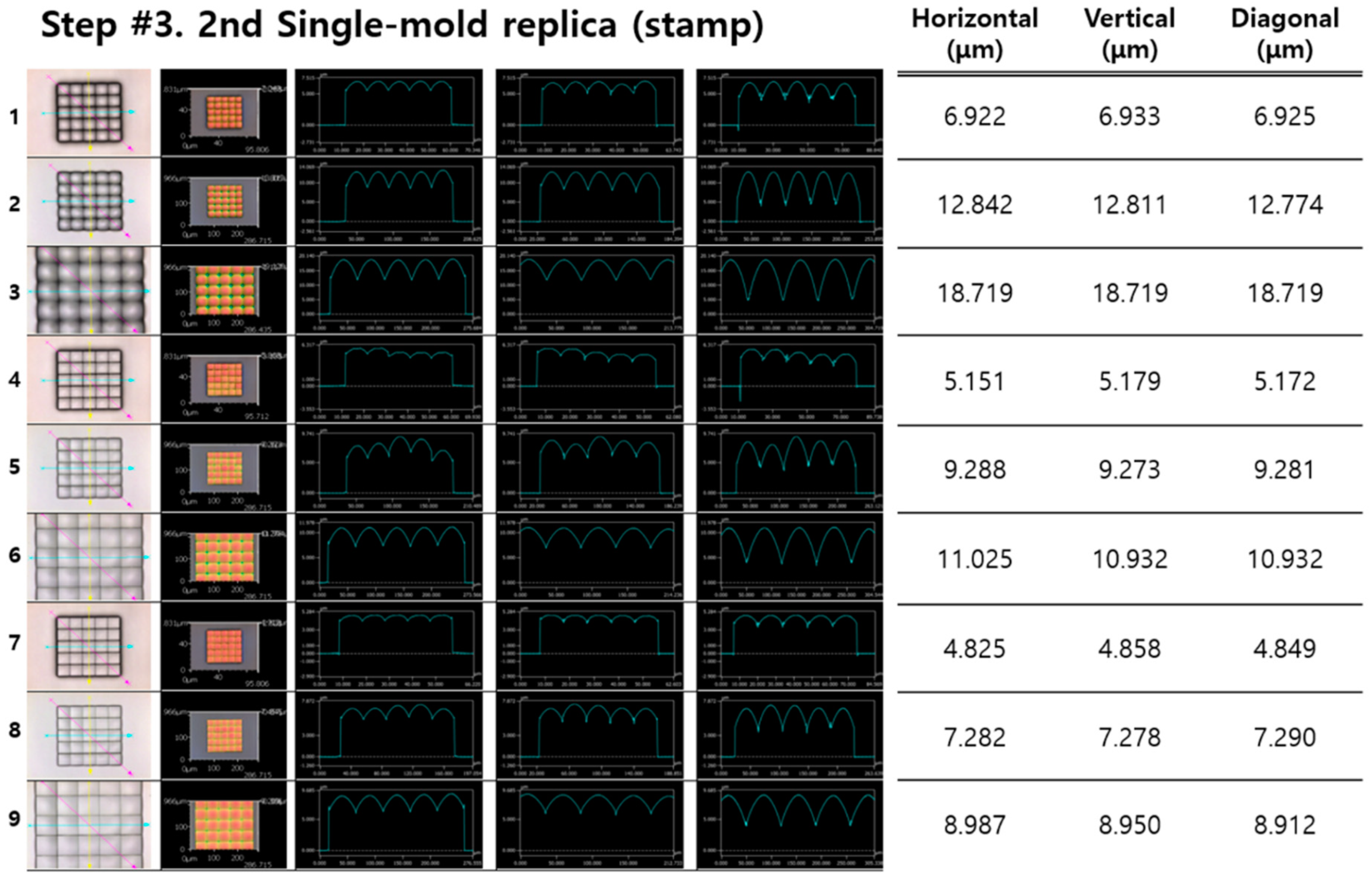
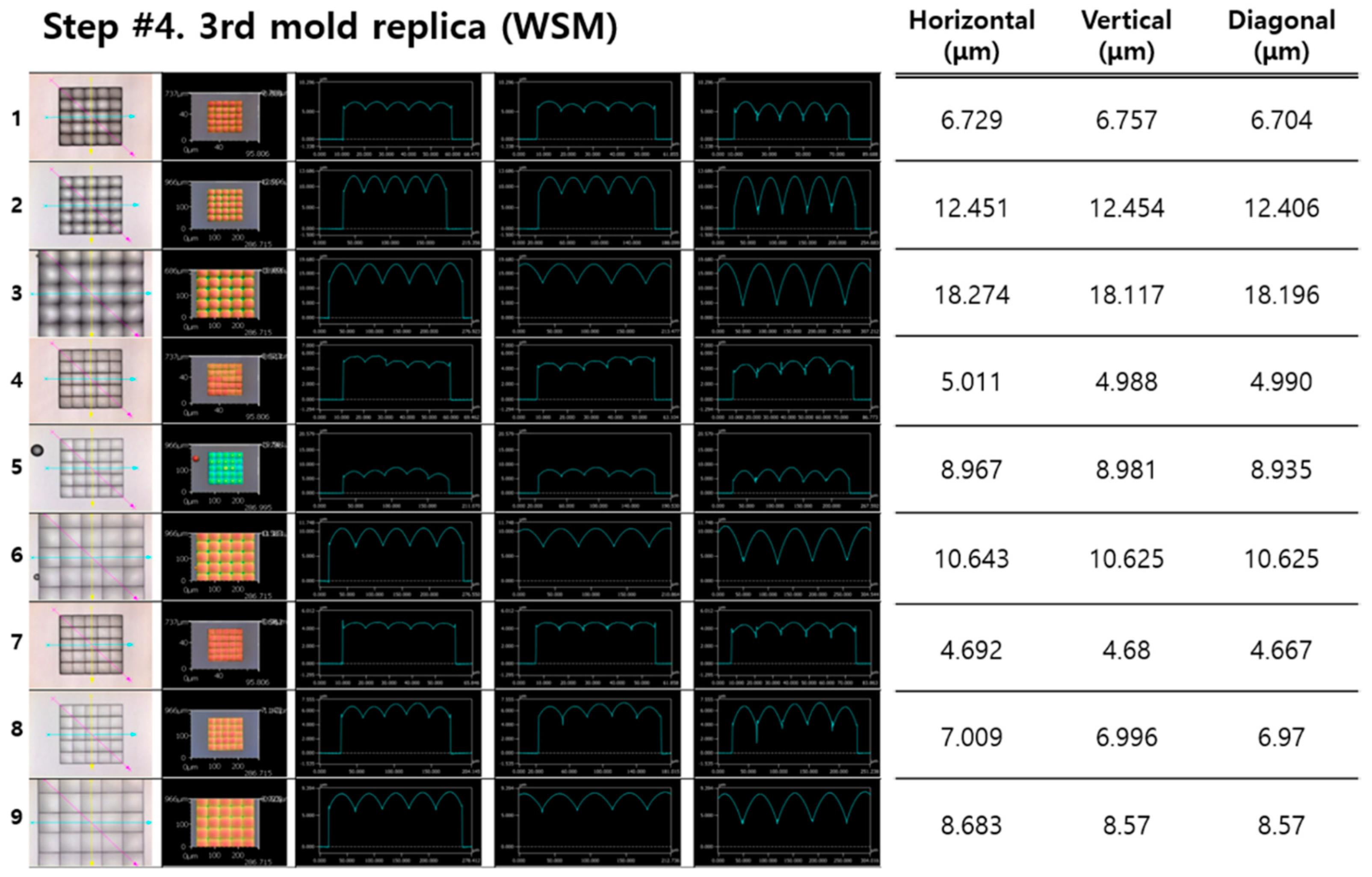
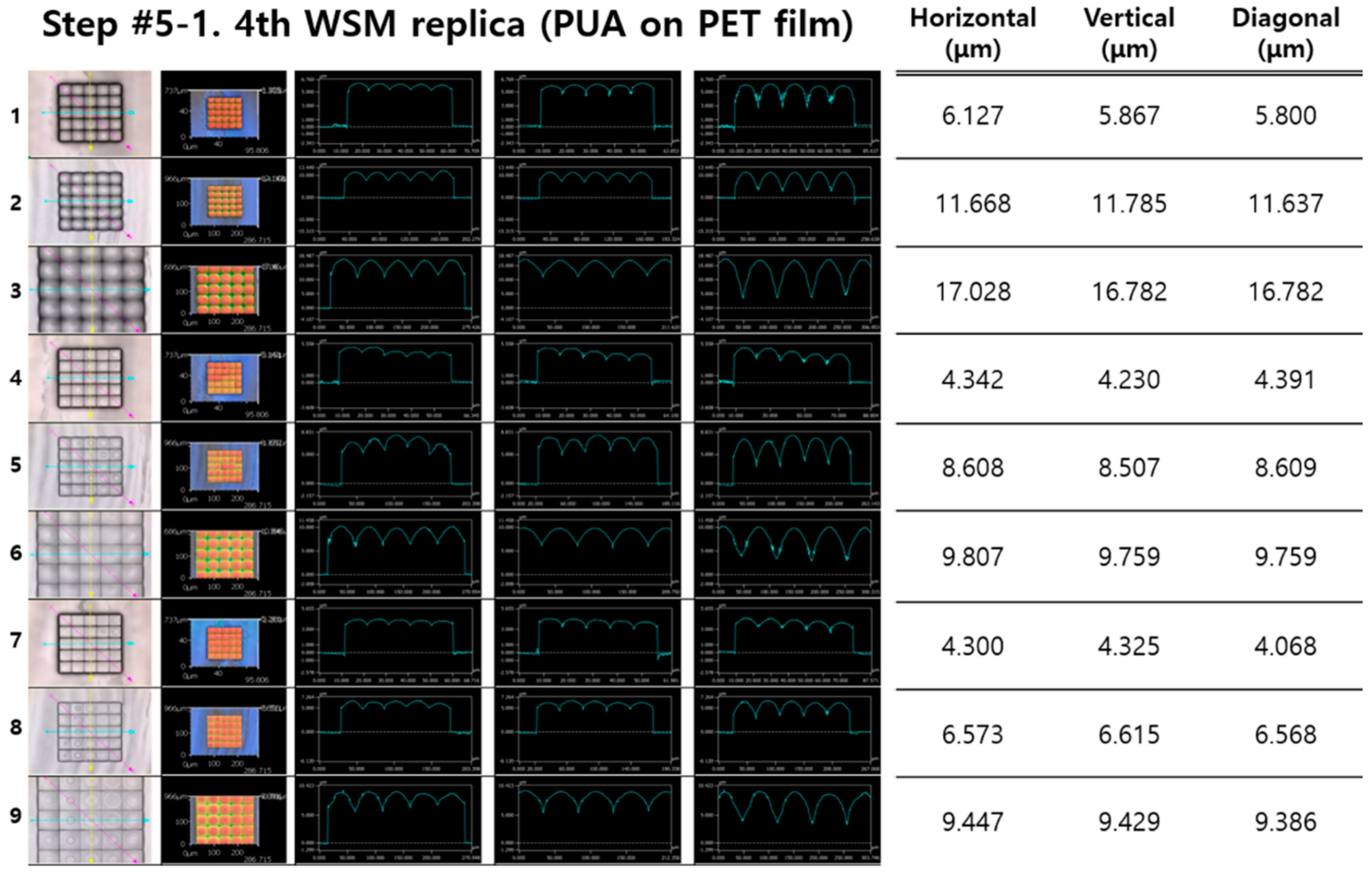
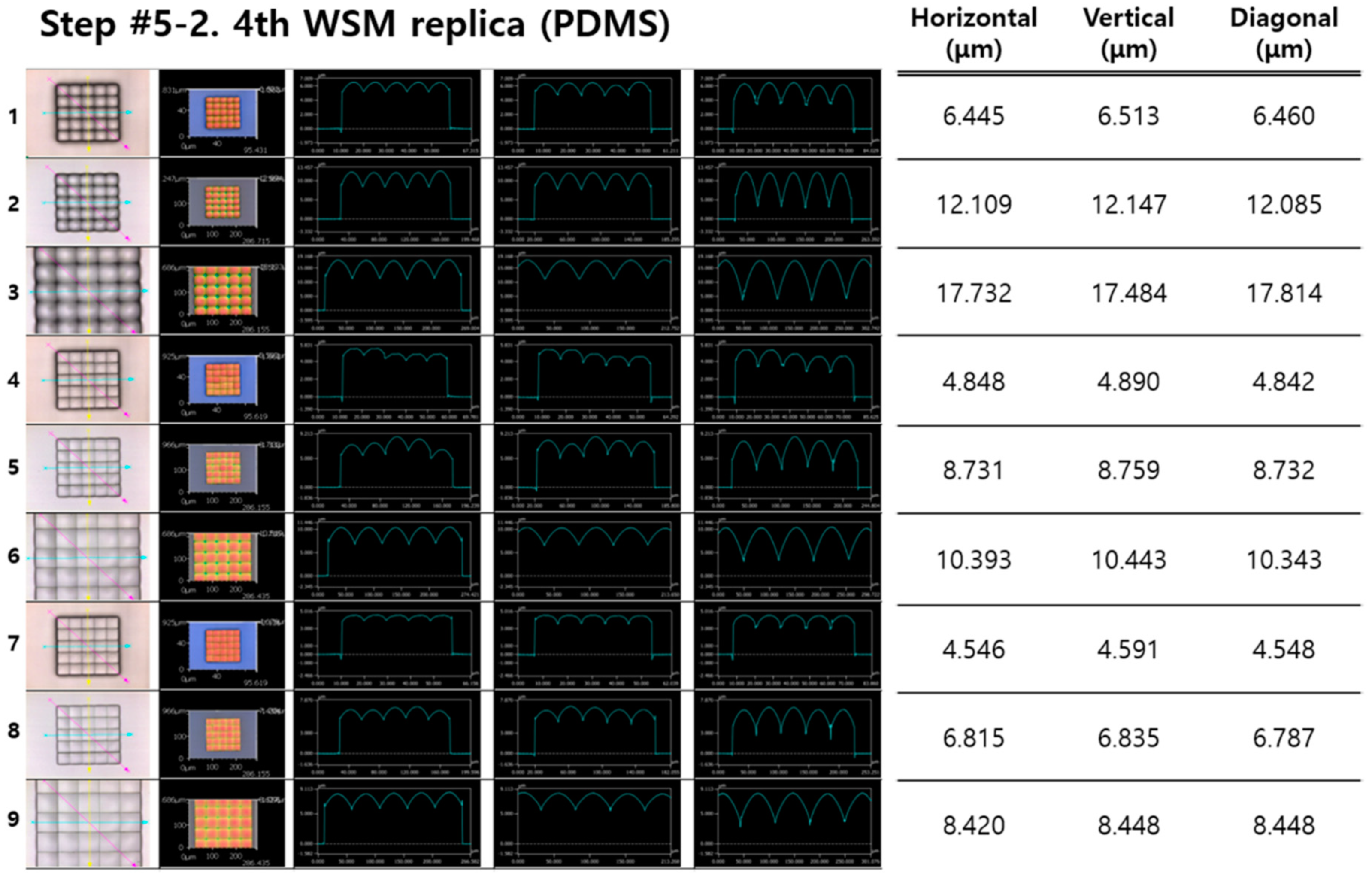
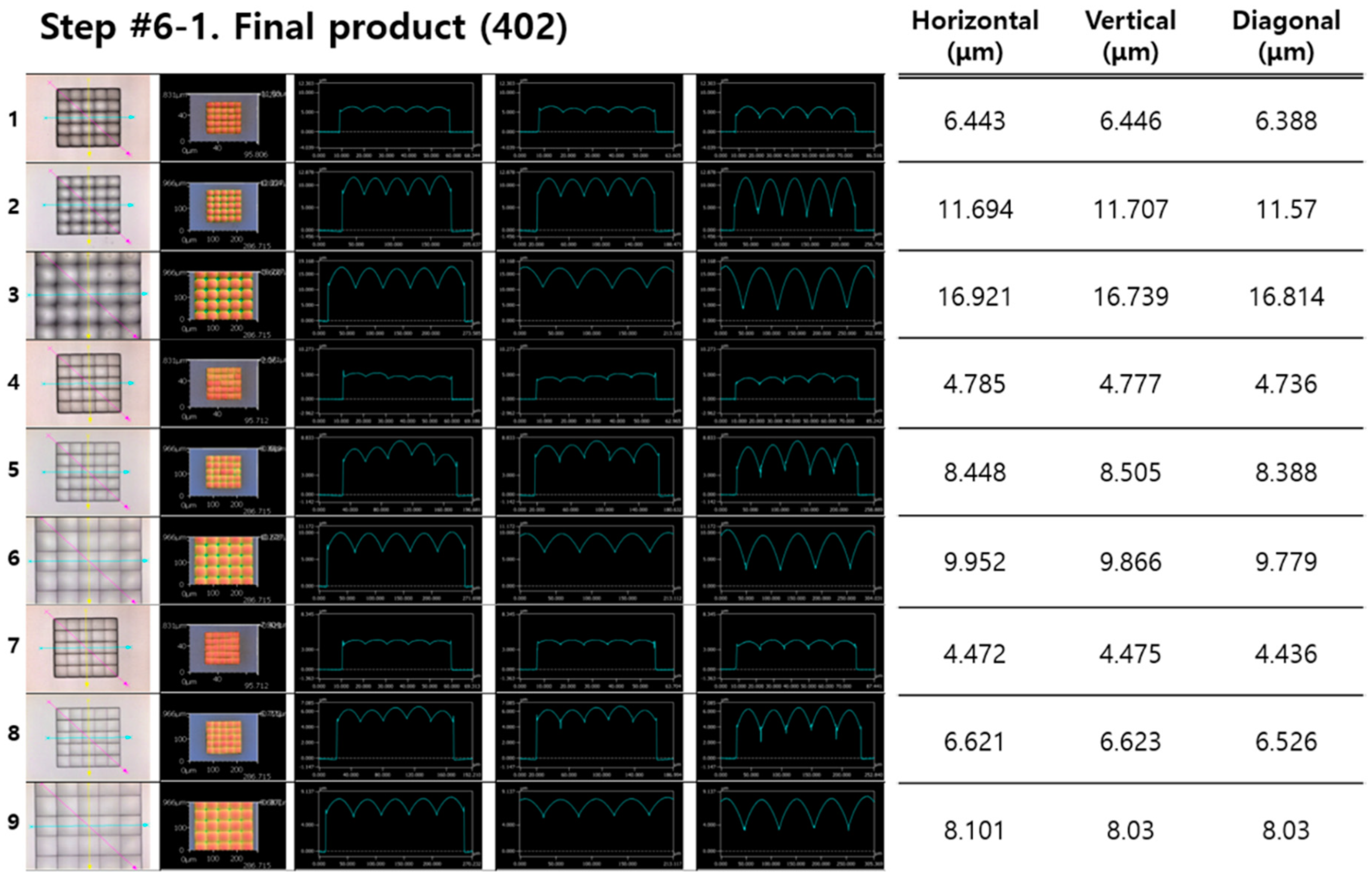

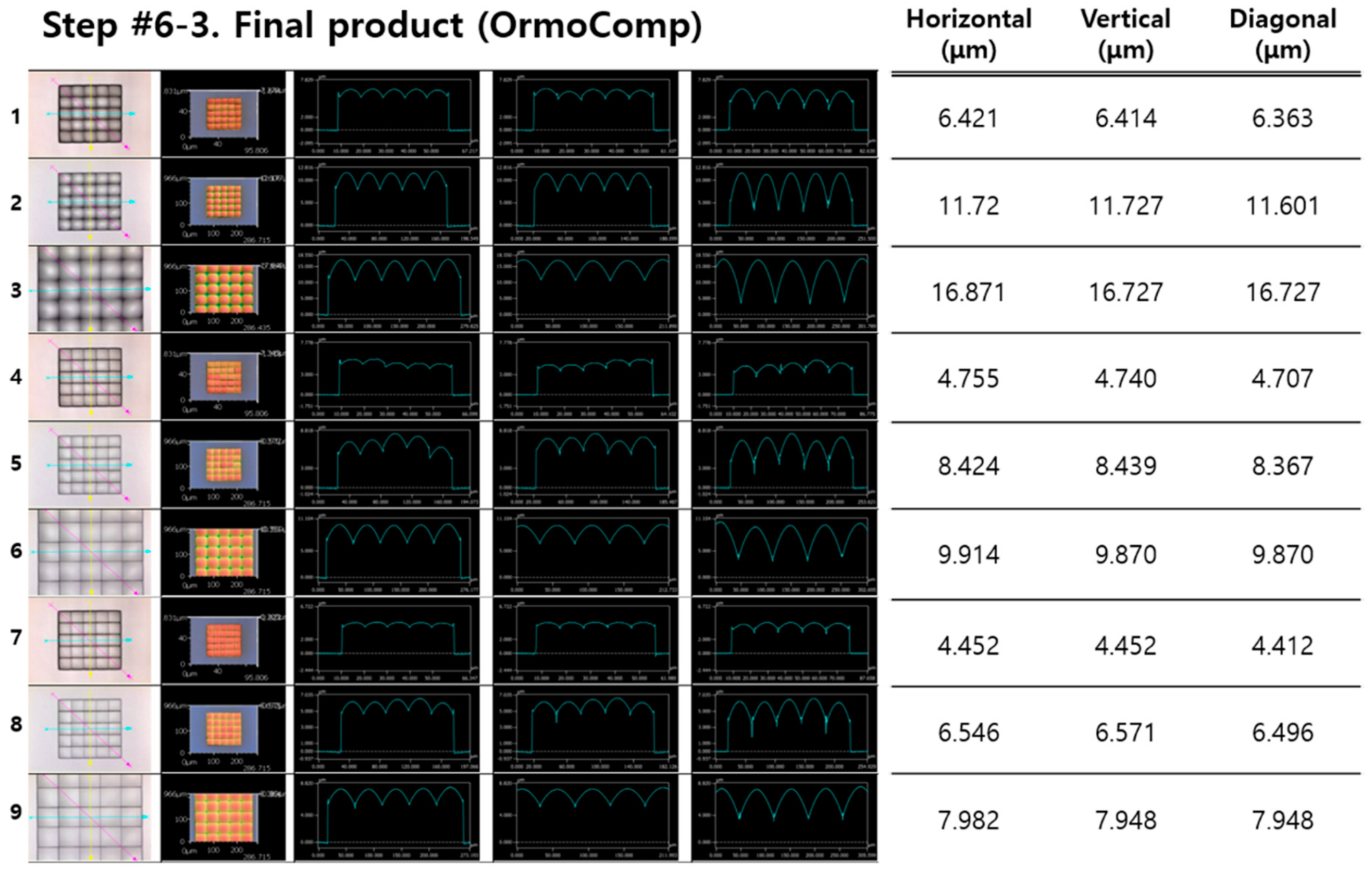
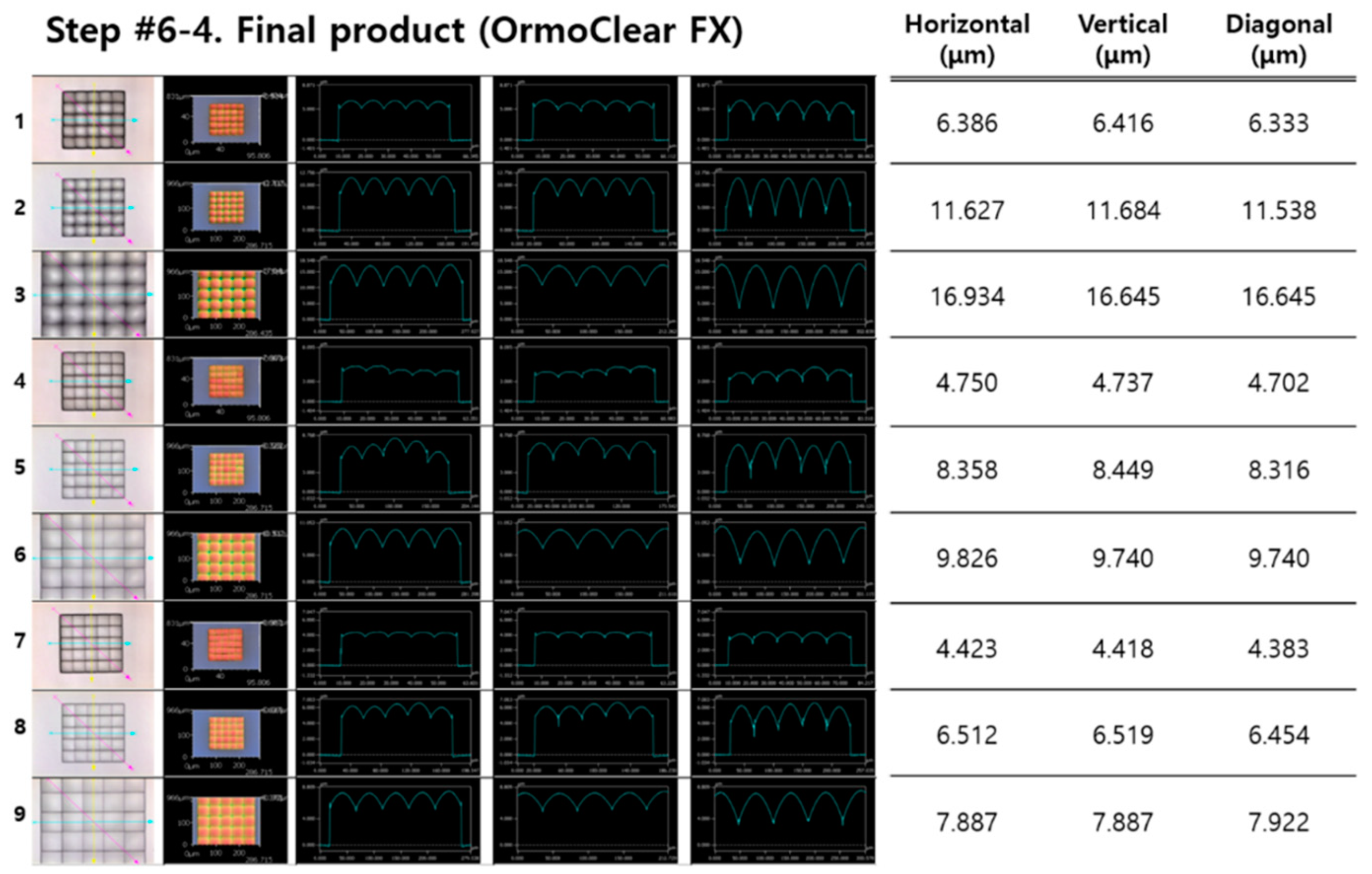
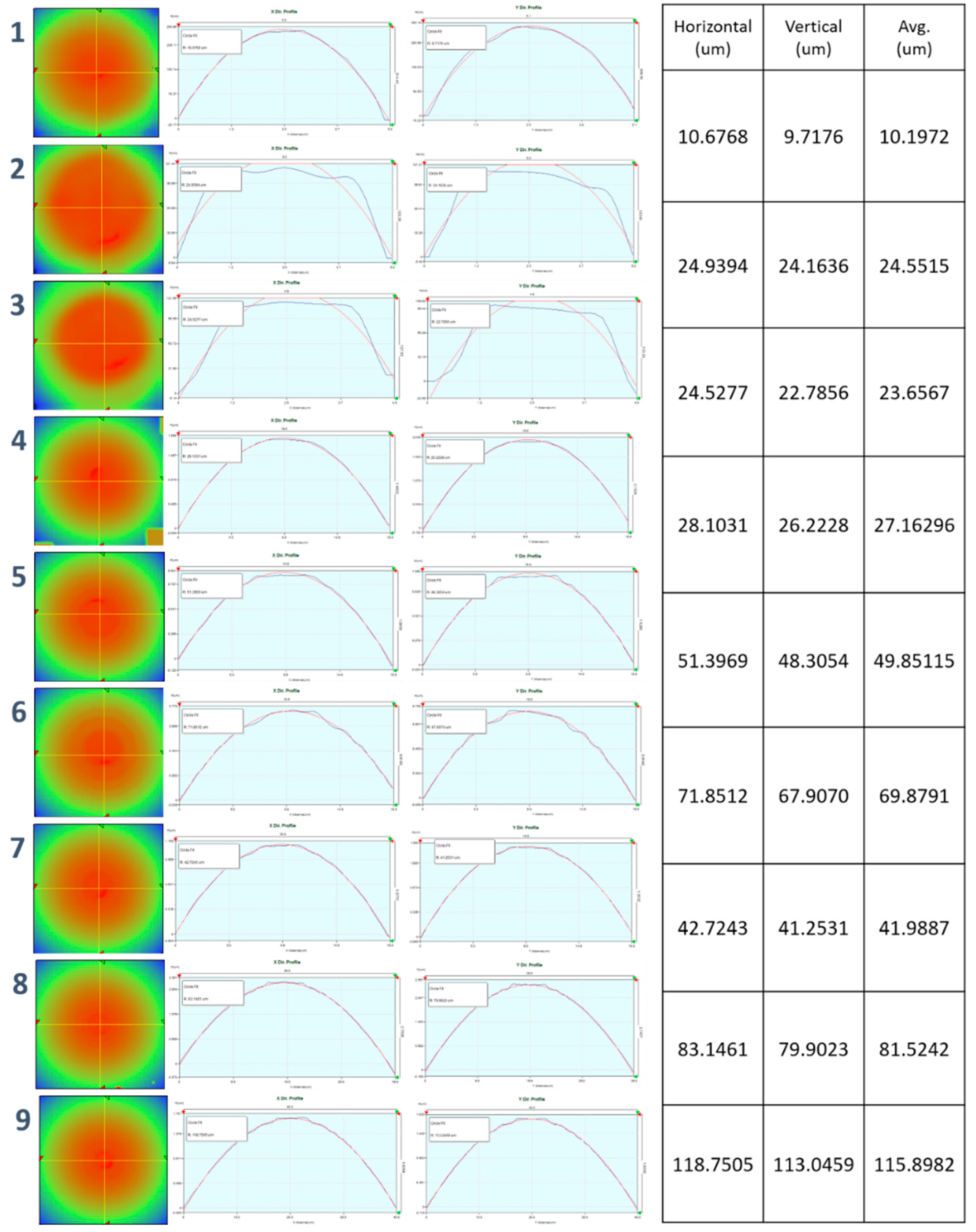
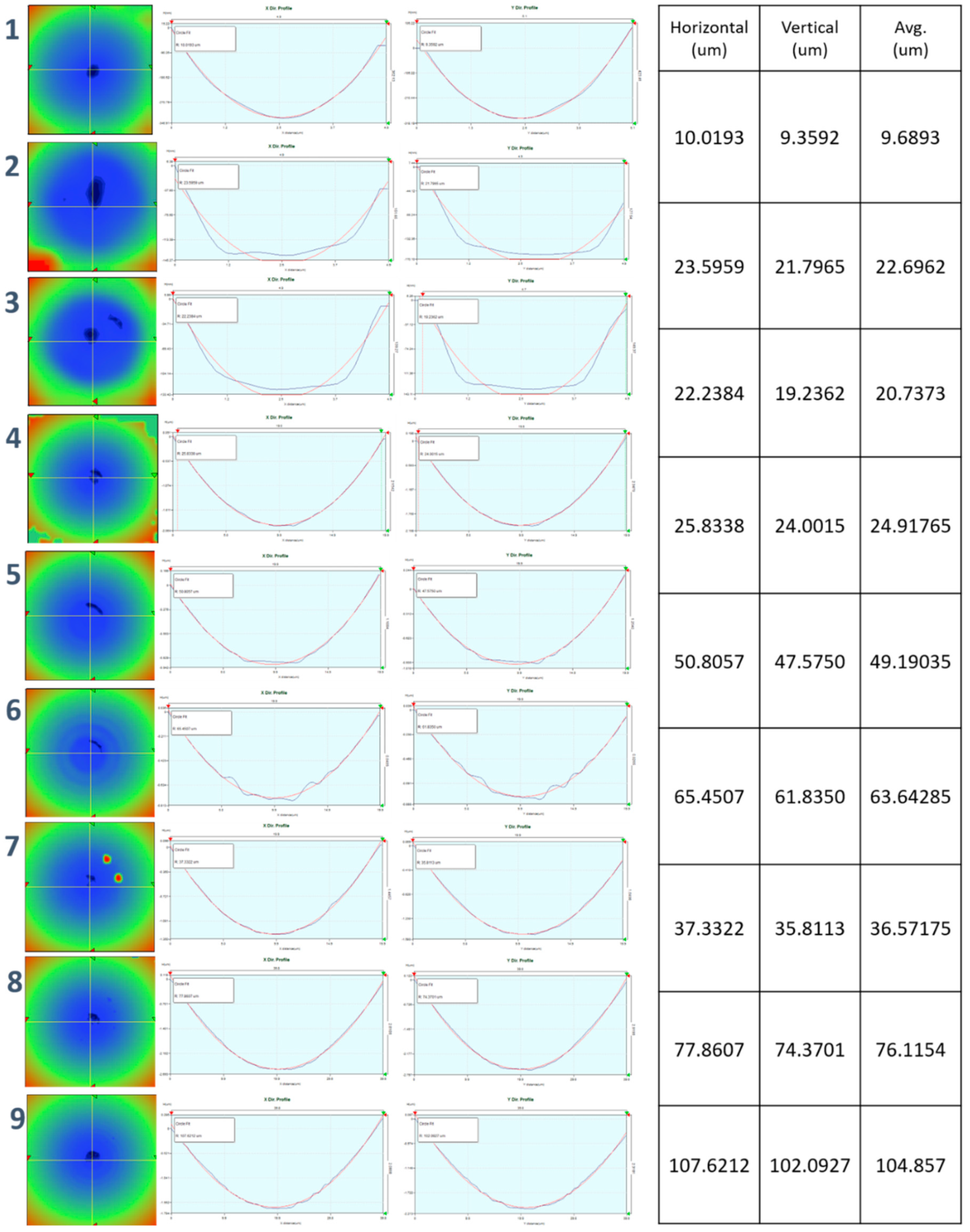



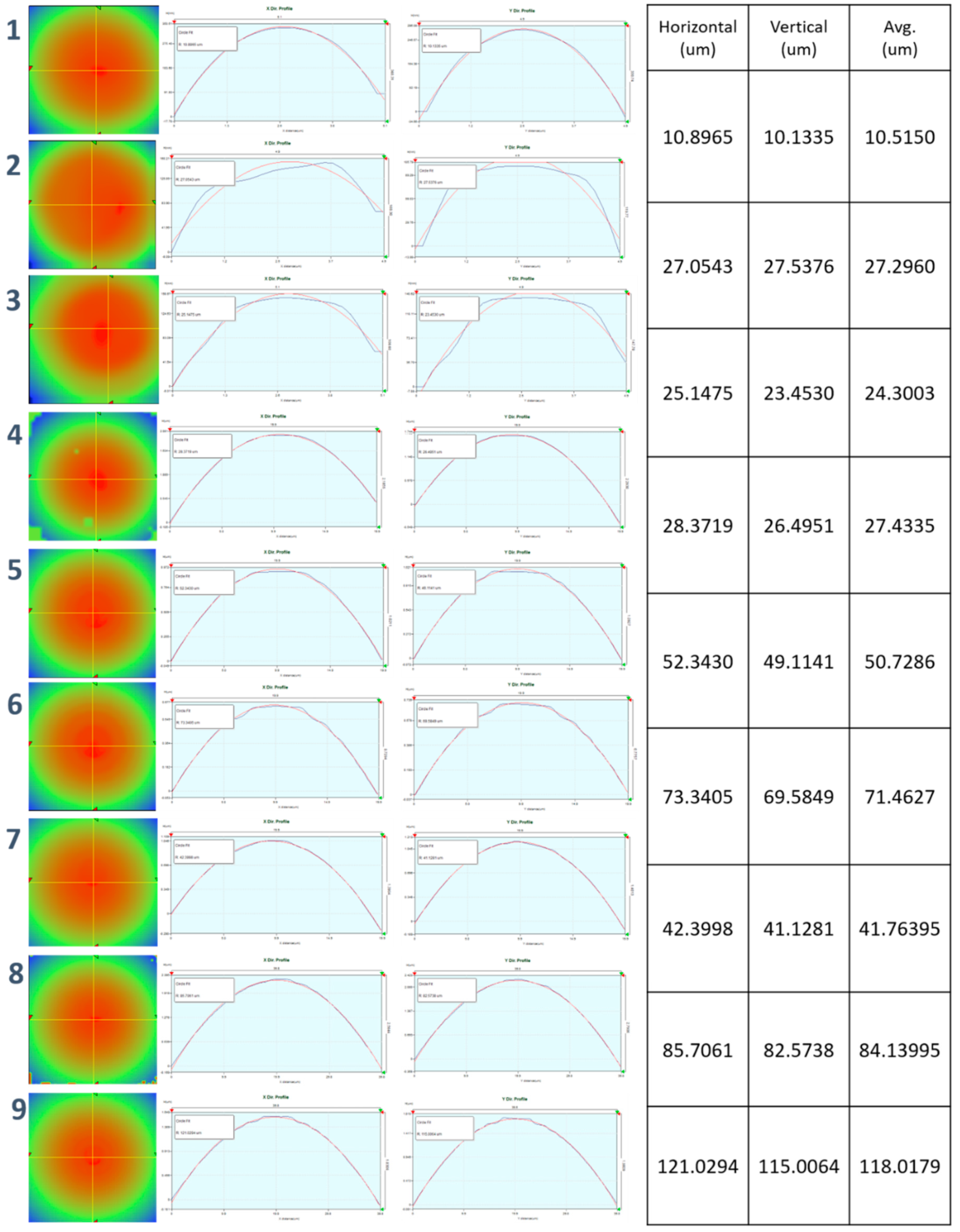
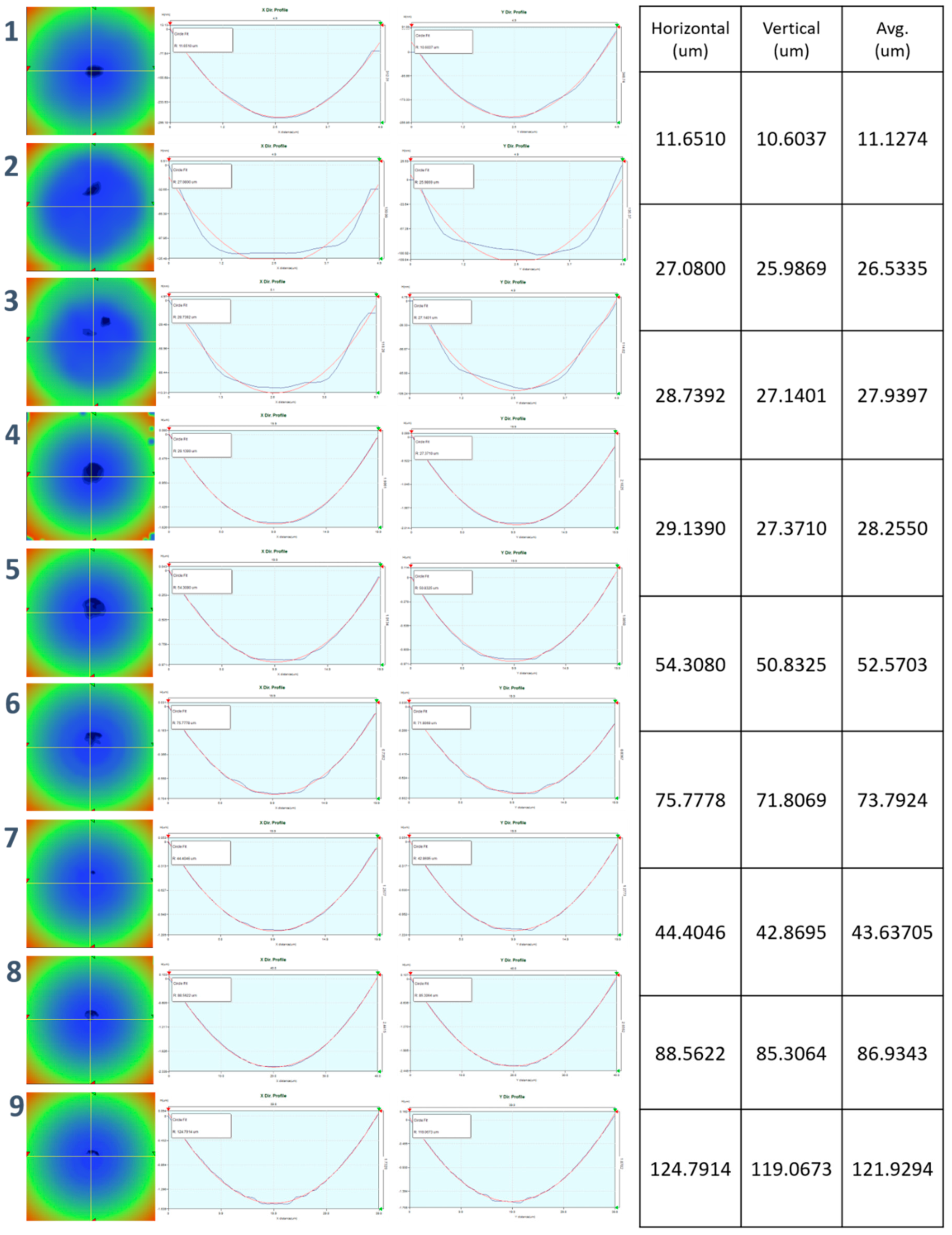
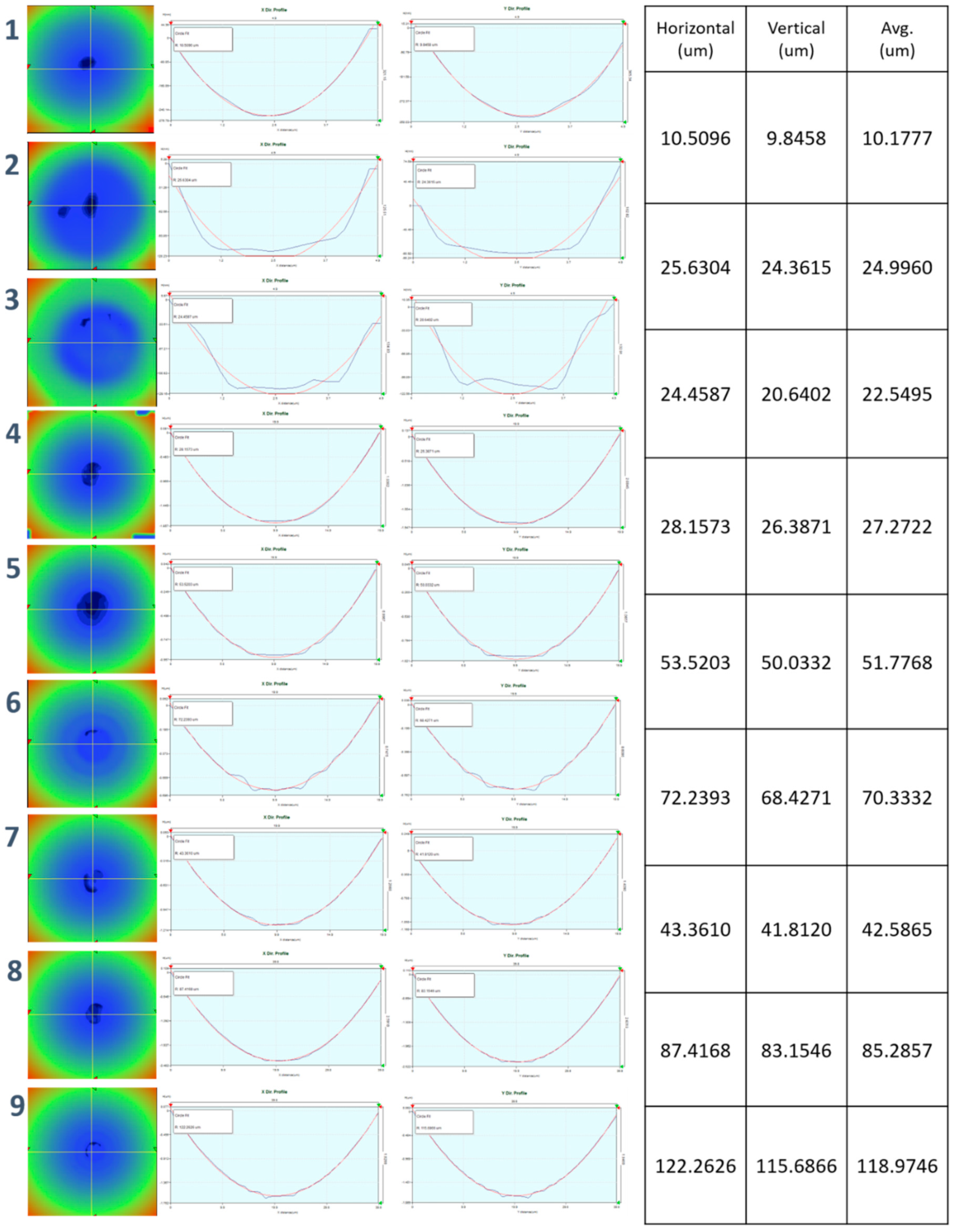
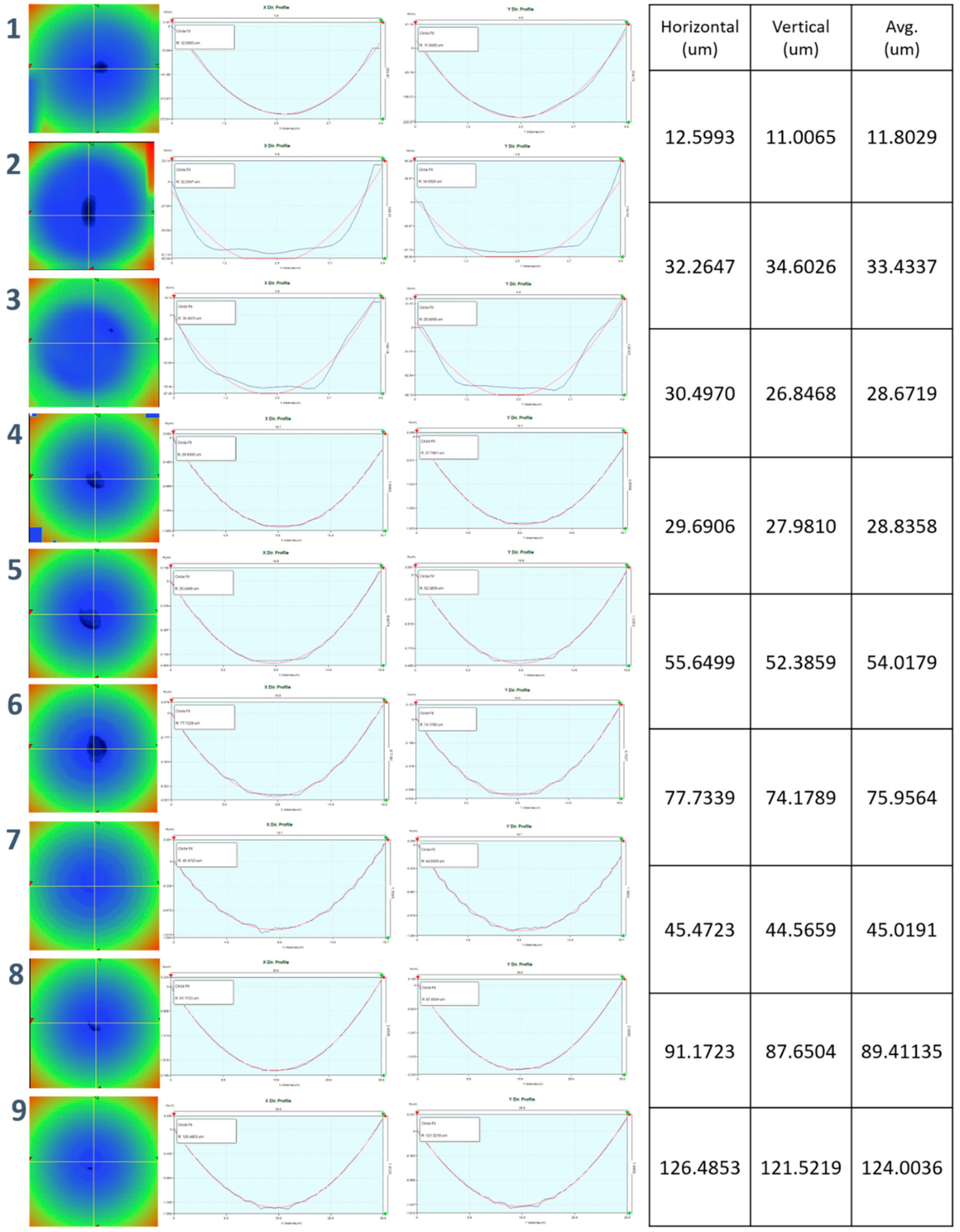
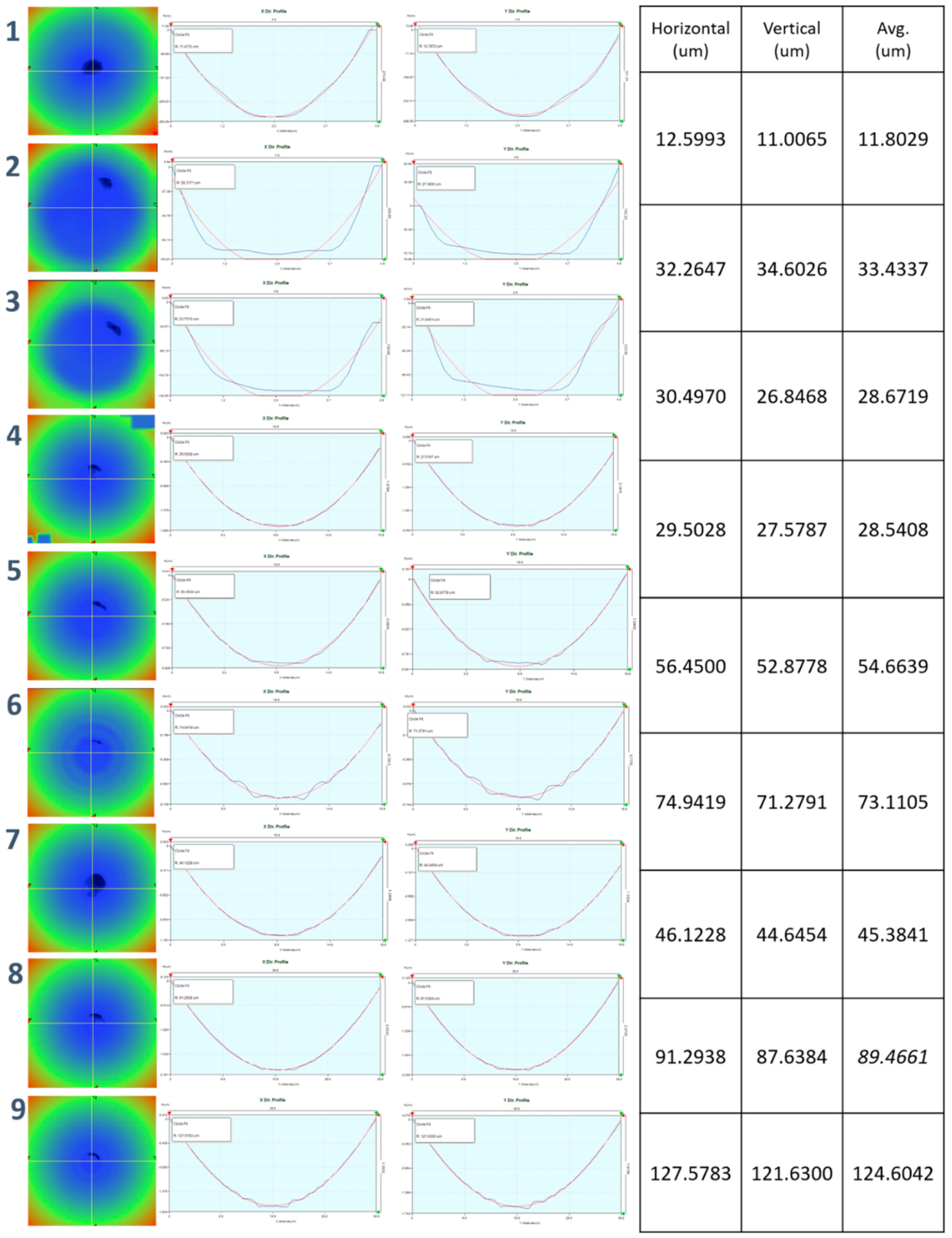
References
- Chou, S.Y.; Krauss, P.R.; Zhang, W.; Guo, L.; Zhuang, L. Sub-10 nm imprint lithography and applications. J. Vac. Sci. Technol. 1997, 15, 2897. [Google Scholar] [CrossRef]
- Guo, L.J. Nanoimprint Lithography: Methods and Material Requirements. Adv. Mater. 2007, 19, 495–513. [Google Scholar] [CrossRef]
- Chou, S.Y.; Krauss, P.R.; Renstrom, P.J. Nanoimprint Lithography. J. Vac. Sci. Technol. B 1998, 14, 4129. [Google Scholar] [CrossRef]
- Torres, C.S.; Zankovych, S.; Seekamp, J.; Kam, A.P.; Cedeno, C.C.; Hoffmann, T.; Ahopelto, J.; Reuther, F.; Pfeiffer, K.; Bleidiessel, G.; et al. Nanoimprint lithography: An alternative nanofabrication approach. Mater. Sci. Eng. C 2003, 23, 23–31. [Google Scholar] [CrossRef]
- Zankovych, S.; Hoffmann, T.; Seekamp, J.; Bruch, J.U.; Torres, C.S. Nanoimprint lithography: Challenges and prospects. Nanotechnology 2001, 12, 91. [Google Scholar] [CrossRef]
- Green, S.; Song, S.; Kim, B. Fabrication of Channel Circuit Electrodes and Flexible Graphene Resistive Sensors for Detecting Dinitrotoluene 2,4 (DNT). Int. J. Precis. Eng. Manuf. 2020. [Google Scholar] [CrossRef]
- Moon, I.Y.; Kim, B.H.; Lee, H.W.; Oh, Y.S.; Kim, J.H.; Kang, S.H. Superhydrophobic Polymer Surface with Hierarchical Patterns Fabricated in Hot Imprinting Process. Int. J. Precis. Eng. Manuf. Green Technol. 2020, 7, 493–503. [Google Scholar] [CrossRef]
- Cao, A.; Xue, L.; Pang, Y.; Liu, L.; Pang, H.; Shi, L.; Deng, Q. Design and Fabrication of Flexible Naked-Eye 3D Display Film Element Based on Microstructure. Micromachines 2019, 10, 864. [Google Scholar] [CrossRef]
- Kim, J.H.; Jeong, H.E.; Kim, S.M.; Kang, S.M. Enhanced Directional Adhesion Behavior of Mushroom-Shaped Microline Arrays. Int. J. Precis. Eng. Manuf. Green Technol. 2020, 7, 239–245. [Google Scholar] [CrossRef]
- Zhang, S.; Jiang, Q.; Xu, Y.; Guo, C.F.; Wu, Z. Facile Fabrication of Self-Similar Hierarchical Micro-Nano Structures for Multifunctional Surfaces via Solvent-Assisted UV-Lasering. Micromachines 2020, 11, 682. [Google Scholar] [CrossRef]
- Barbillon, G. Plasmonic nanostructures prepared by soft UV nanoimprint lithography and their application in biological sensing. Micromachines 2012, 3, 21–27. [Google Scholar] [CrossRef]
- Lin, C.H.; Chen, R. Ultrasonic nanoimprint lithography: A new approach to nanopatterning. J. Mirco/Nanolithogr. MEMS MOEMS 2006, 5, 011003. [Google Scholar] [CrossRef]
- Ahn, S.H.; Guo, L.J. High-Speed Roll-to-Roll Nanoimprint Lithography on Flexible Plastic Substrates. Adv. Mater. 2008, 20, 2044–2049. [Google Scholar] [CrossRef]
- Lee, S.H.; Kim, S.W.; Park, C.W.; Jeong, H.E.; Ok, J.G.; Kwak, M.K. Scalable fabrication of flexible transparent heaters comprising continuously created metallic micromesh patterns incorporated with biomimetic anti-reflection layers. Int. J. Precis. Eng. Manuf. Green Technol. 2017, 4, 177–181. [Google Scholar] [CrossRef]
- Lee, S.H.; Kim, S.W.; Kang, B.S.; Chang, P.-S.; Kwak, M.K. Scalable and continuous fabrication of bio-inspired dry adhesives with a thermosetting polymer. Soft Matter 2018, 14, 2586–2593. [Google Scholar] [CrossRef] [PubMed]
- Stuart, C.; Chen, Y. Roll in and roll out: A path to high-throughput nanoimprint lithography. ACS Nano 2009, 3, 2062–2064. [Google Scholar] [CrossRef] [PubMed]
- Kooy, N.; Mohamed, K.; Pin, L.T.; Guan, O.S. A review of roll-to-roll nanoimprint lithography. Nanoscale Res. Lett. 2014, 9, 320. [Google Scholar] [CrossRef] [PubMed]
- Amirsadeghi, A.; Lee, J.J.; Park, S. Polymerization shrinkage stress measurement for a UV-curable resist in nanoimprint lithography. J. Micromech. Microeng. 2011, 21, 115013. [Google Scholar] [CrossRef]
- Hudson, A.J.; Martin, S.C.; Hubert, M.; Spelt, J.K. Optical Measurements of Shrinkage in UV-Cured Adhesives. J. Electron. Packag. 2002, 124, 352–354. [Google Scholar] [CrossRef]
- Colburn, M.; Suez, I.; Choi, B.J.; Meissl, M.; Bailey, T.; Sreenivasan, S.V.; Ekerdt, J.G.; Willson, C.G. Characterization and modeling of volumetric and mechanical properties for step and flash imprint lithography photopolymers. J. Vac. Sci. Technol. B 2001, 19, 2685. [Google Scholar] [CrossRef]
- Johnson, S.; Burns, R.; Kim, E.K.; Dickey, M.; Schmid, G.; Meiring, J.; Burns, S.; Willson, C.G. Effects of etch barrier densification on step and flash imprint lithography. J. Vac. Sci. Technol. B 2005, 23, 2553. [Google Scholar] [CrossRef]
- Kim, S.M.; Kim, H.M.; Lim, J.S.; Kang, S.I.; Kim, Y.H.; Henderiks, R.; Kastelijn, A.; Busch, C. Elimination of jitter in microlens illuminated optical probe array using a filtering layer for the optical read only memory card system. Jpn. J. Appl. Phys. 2006, 45, 1162–1166. [Google Scholar] [CrossRef]
- Hamam, H. A two-way optical interconnection network using a single mode fiber array. Opt. Commun. 1998, 150, 270–276. [Google Scholar] [CrossRef]
- Chen, X.; Song, Y.; Zhang, W.; Sulaman, M.; Zhao, S.; Guo, B.; Hao, Q.; Li, L. Imaging method based on the combination of microlens arrays and aperture arrays. Appl. Opt. 2018, 57, 5392–5398. [Google Scholar] [CrossRef]
- Levoy, M.; Zhang, Z.; McDowall, I. Recording and controlling the 4D light field in a microscope using microlens arrays. J. Microsc. 2009, 235, 144–162. [Google Scholar] [CrossRef]
- Kim, M.S.; Lee, J.H.; Kwak, M.K. Review: Surface Texturing Methods for Solar Cell Efficiency Enhancement. Int. J. Precis. Eng. Manuf. 2020, 21, 1389–1398. [Google Scholar] [CrossRef]
- Wu, M.H.; Paul, K.E.; Whitesides, G.M. Patterning flood illumination with microlens arrays. Appl. Opt. 2002, 41, 2575–2585. [Google Scholar] [CrossRef]
- Park, M.; Park, H.; Joo, K.; Lee, T.H.; Kwon, K.C.; Erdenebat, M.U.; Lim, Y.T.; Kin, N.; Kim, H.R. Fast-switching laterally virtual-moving microlens array for enhancing spatial resolution in light-field imaging system without degradation of angular sampling resolution. Sci. Rep. 2019, 9, 11297. [Google Scholar] [CrossRef]
- Goeppert-Mayer, M. Über Elementarakte mit zwei Quantensprüngen. Ann. Phys. 1931, 9, 273–295. [Google Scholar] [CrossRef]
- Kaiser, W.; Garrett, C.G.B. Two-Photon Excitation in CaF2:Eu2+. Phys. Rev. Lett. 1961, 7, 229. [Google Scholar] [CrossRef]
- Niesler, F.; Hermatschweiler, M. Two-Photon Polyerization—A Versatile Microfabrication Tool: From maskless lithography to 3D printing. Laser Tech. J. 2015, 12, 44–47. [Google Scholar] [CrossRef]
- Decanini, D.; Harouri, A.; Mita, Y.; Kim, B.J.; Hwang, G. 3D micro fractal pipettes for capillary based robotic liquid handling. Rev. Sci. Instrum. 2020, 91, 086104. [Google Scholar] [CrossRef]
- Mayer, F.; Ryklin, D.; Wacker, I.; Curticean, R.; Čalkovský, M.; Niemeyer, A.; Dong, Z.; Levkin, P.A.; Gerthsen, D.; Schröder, R.R.; et al. 3D Two-Photon Microprinting of Nanoporous Architectures. Adv. Mater. 2020, 32, 2002044. [Google Scholar] [CrossRef]
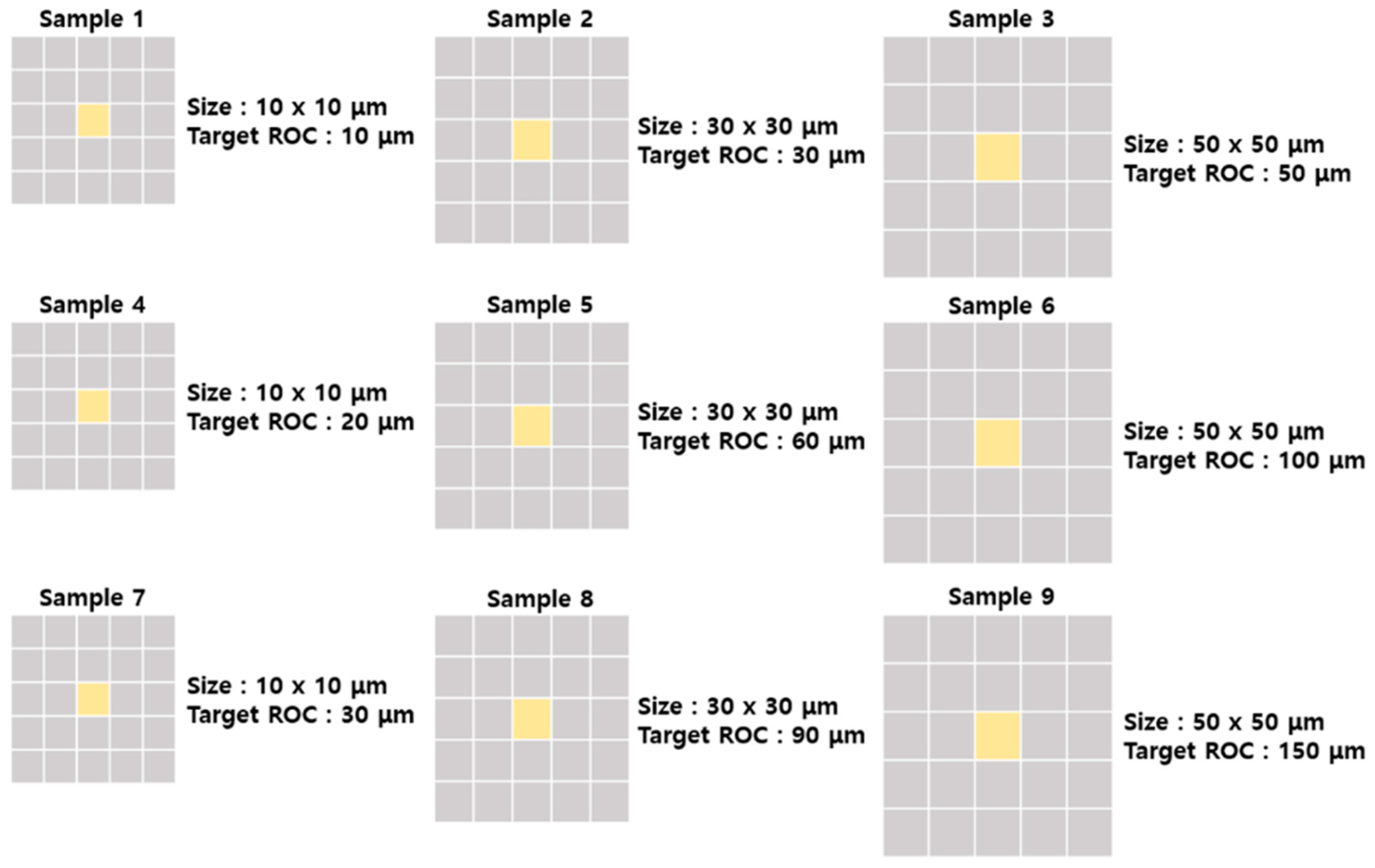
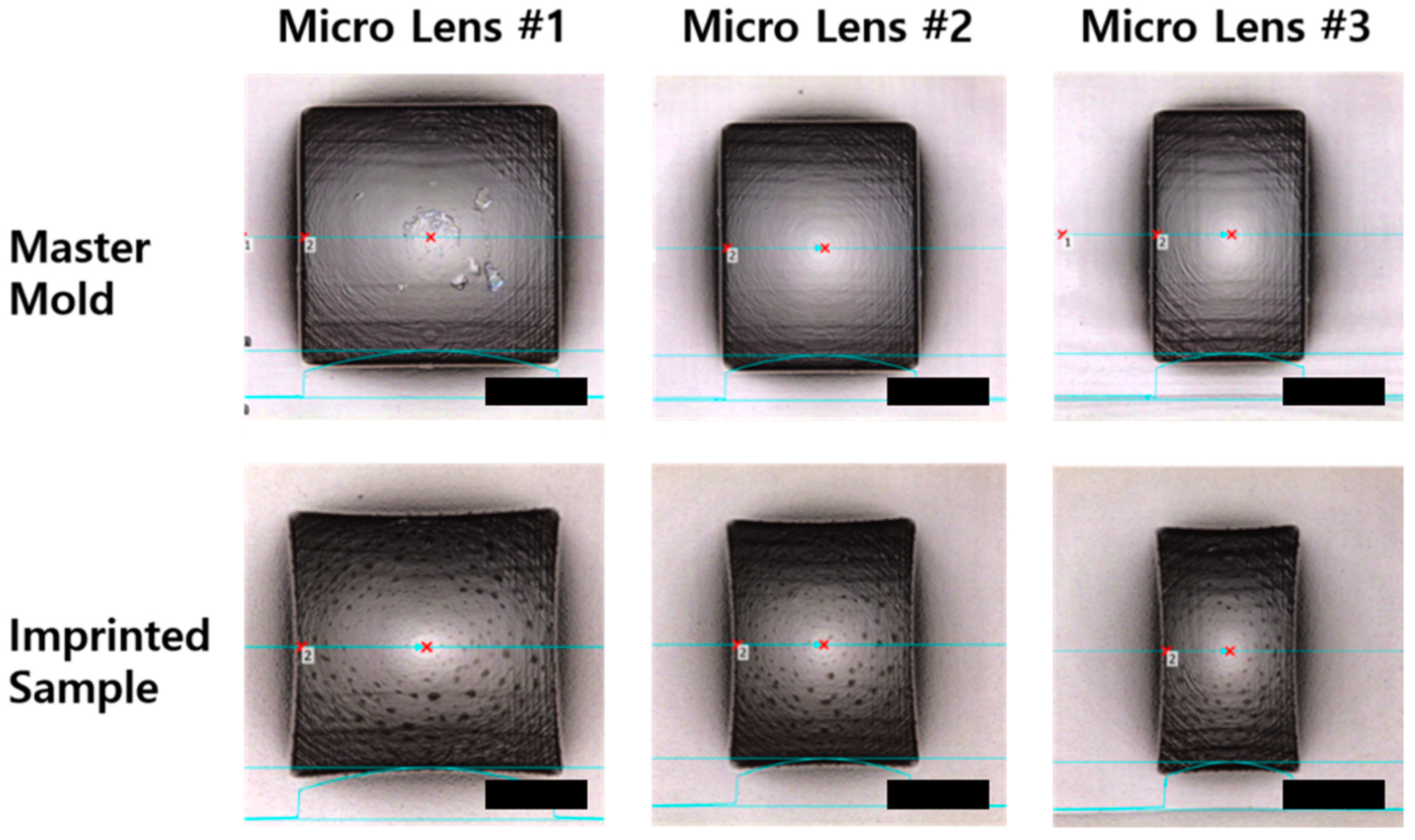
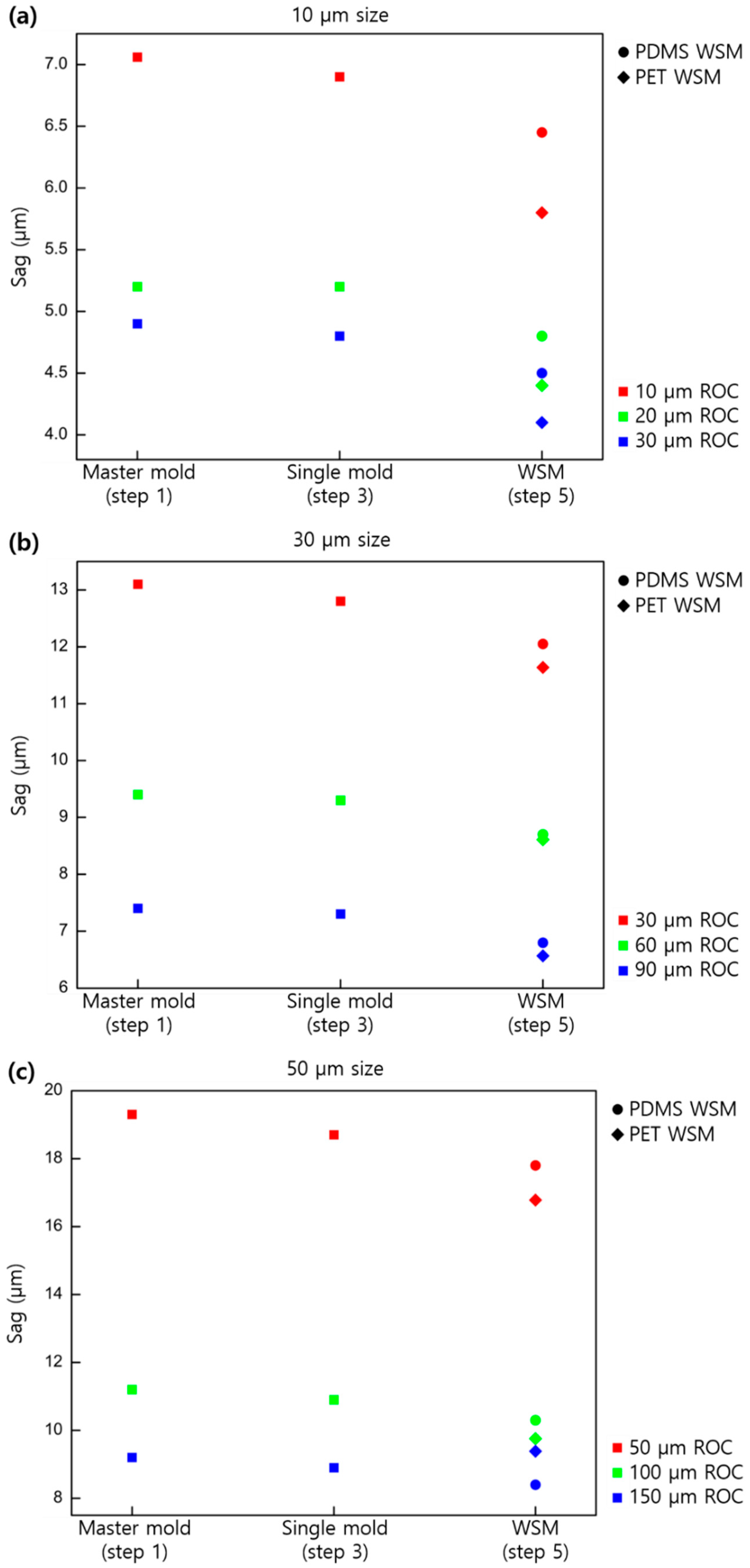
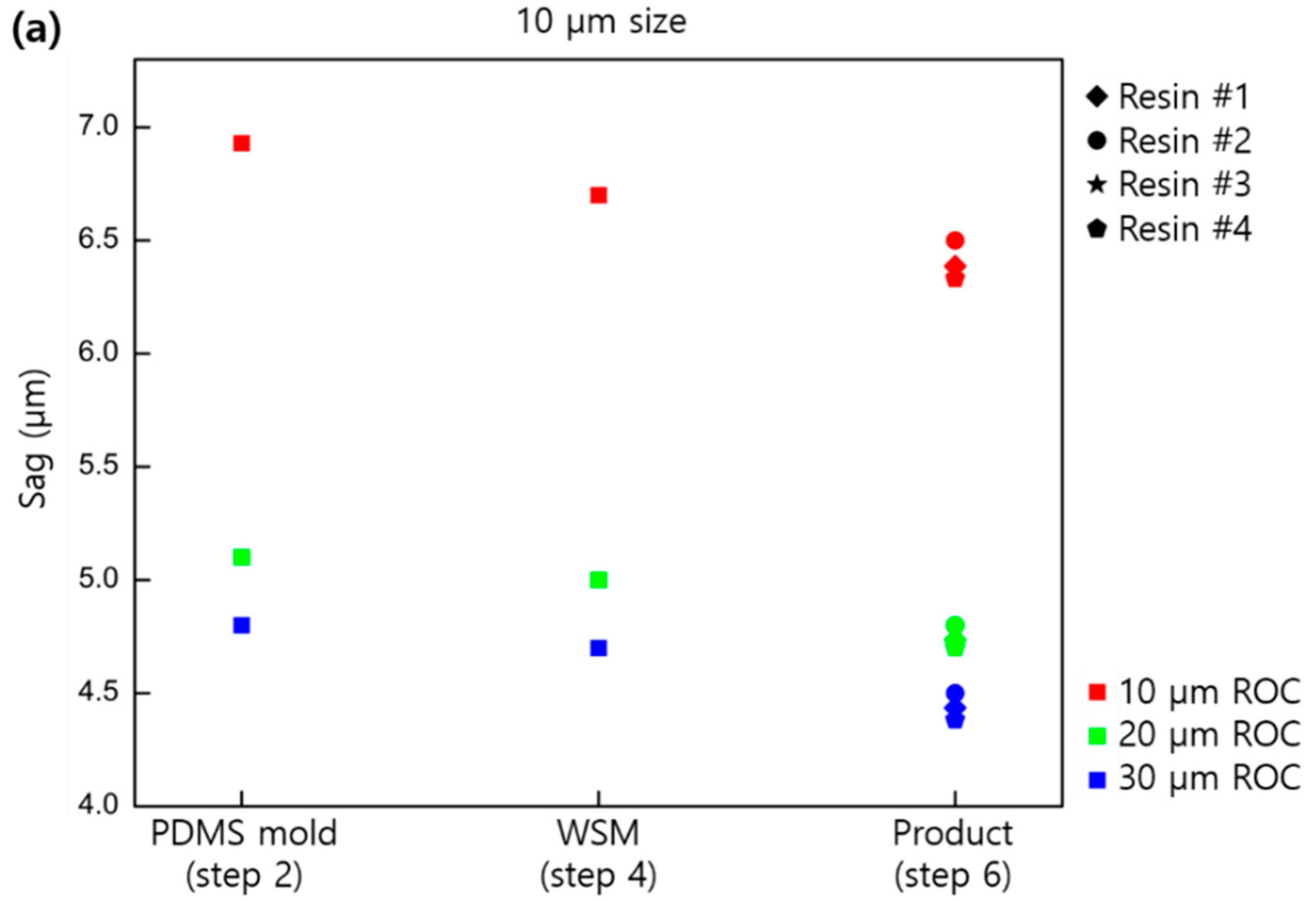
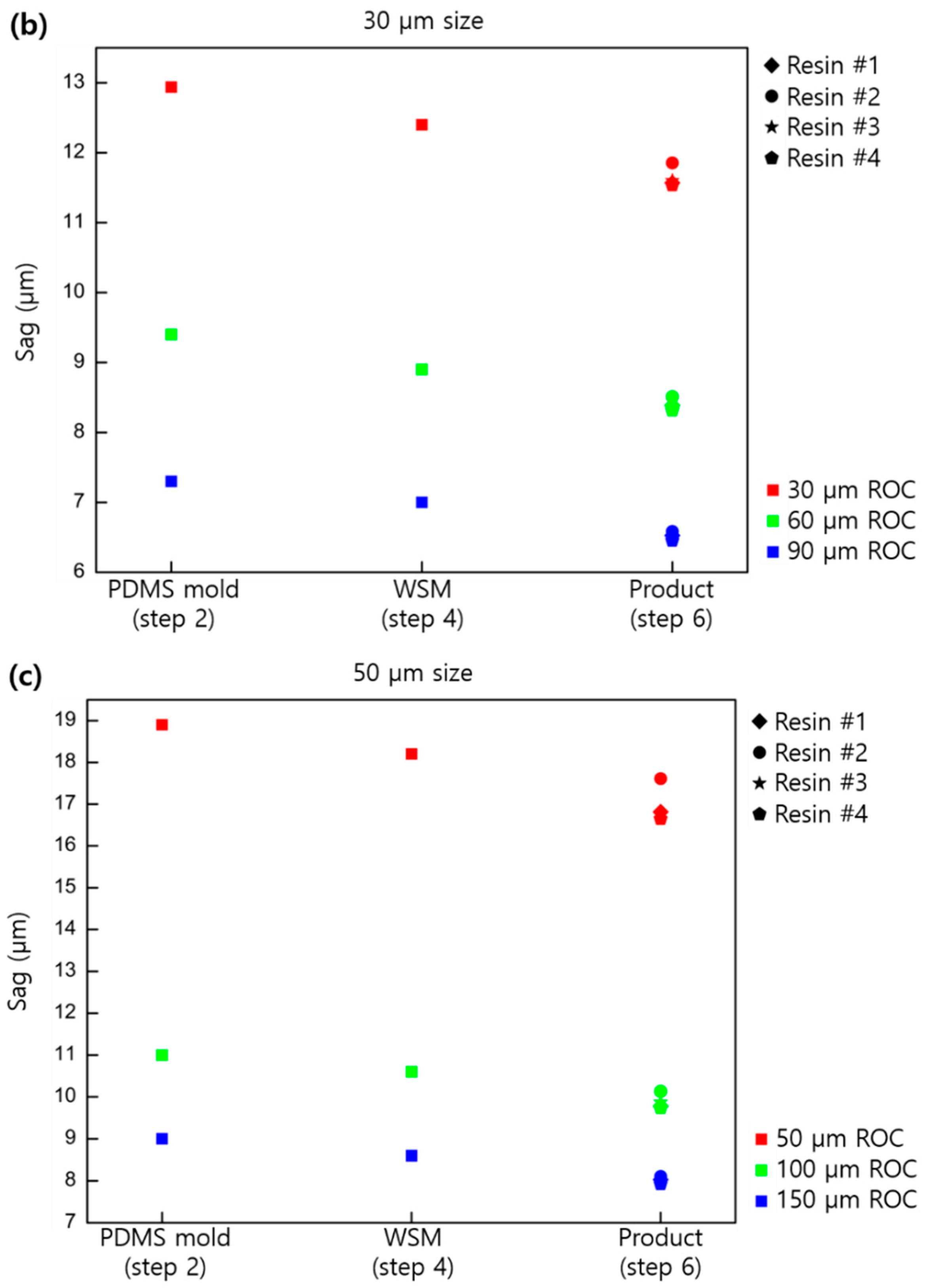
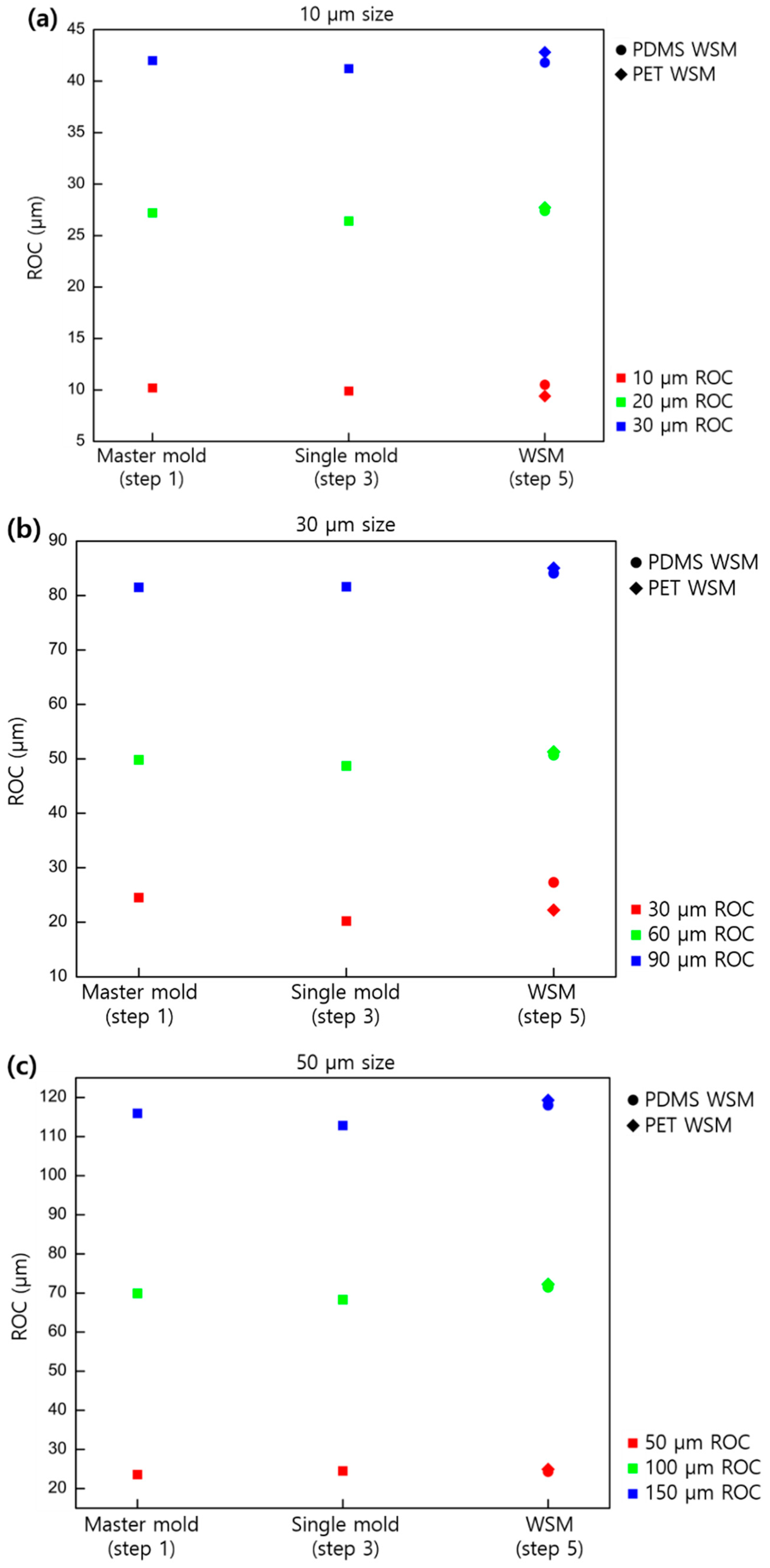
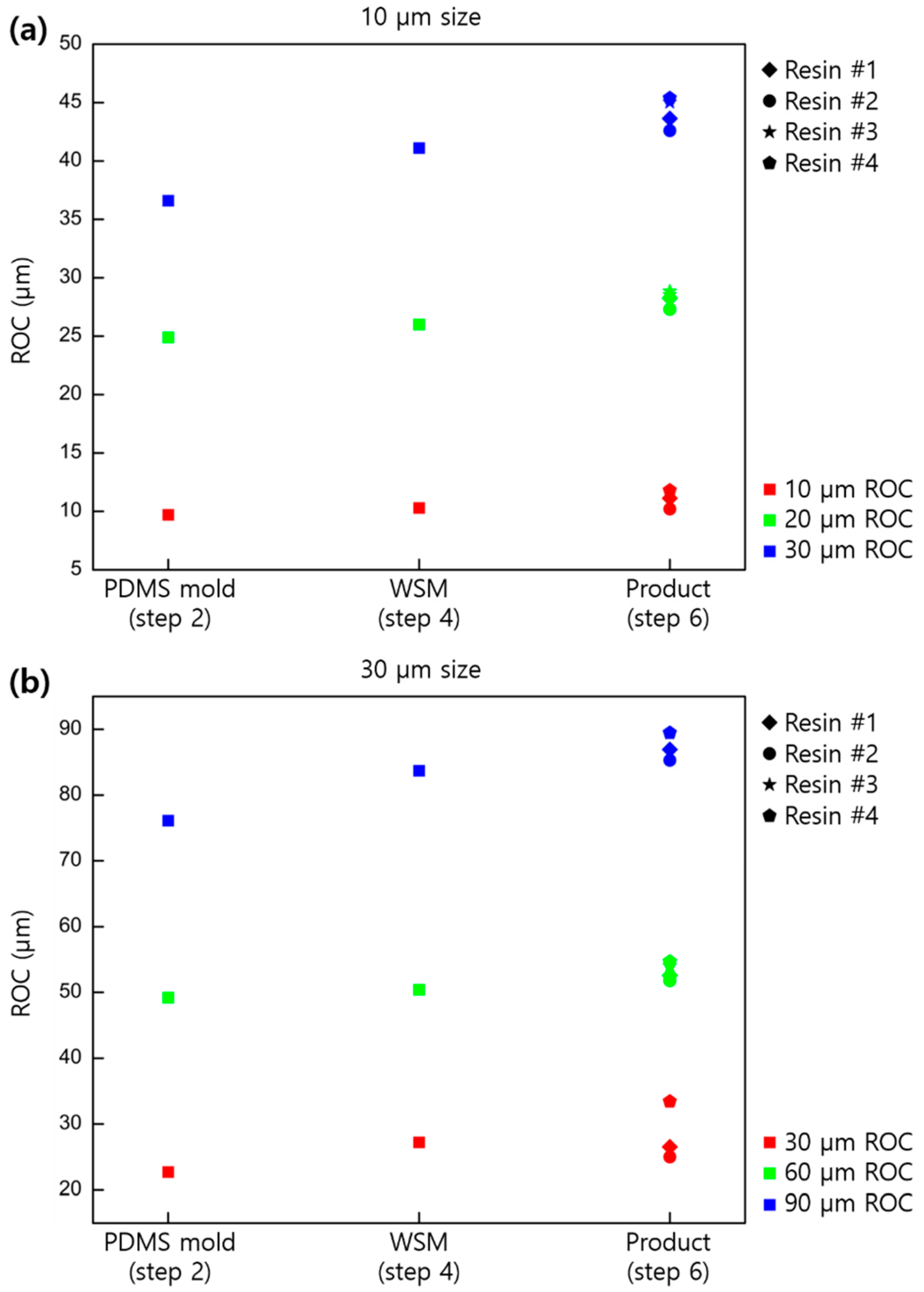
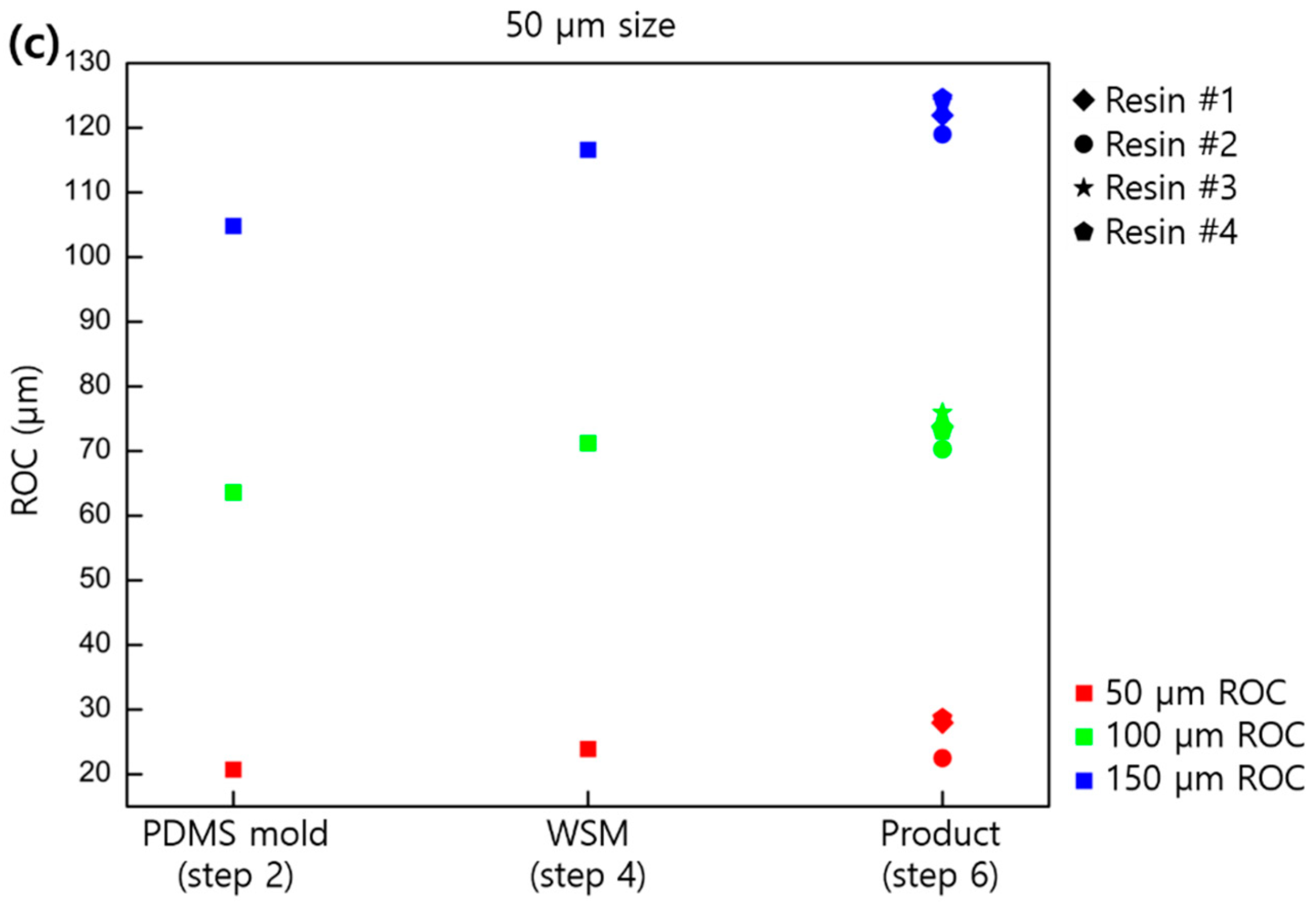

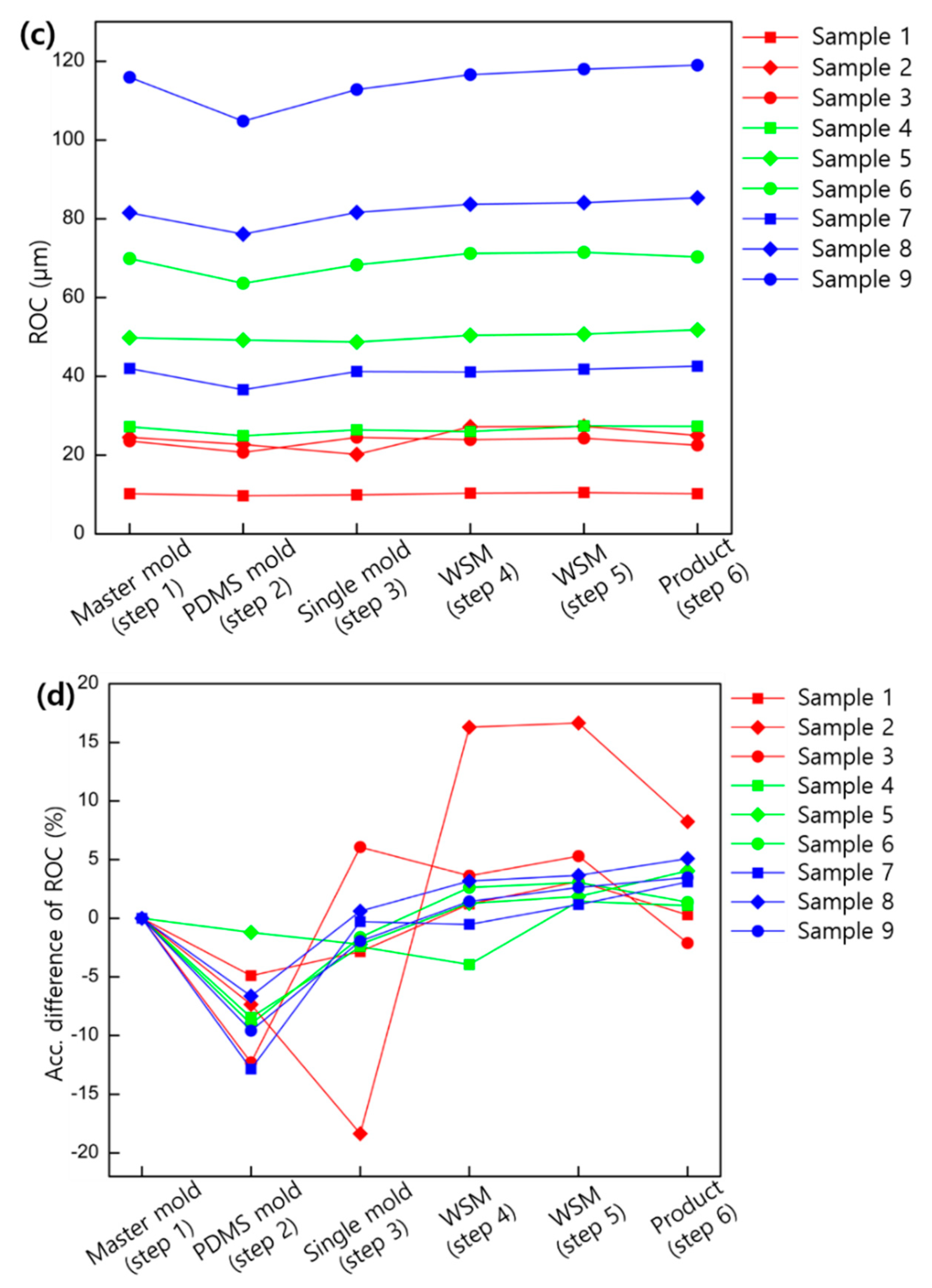

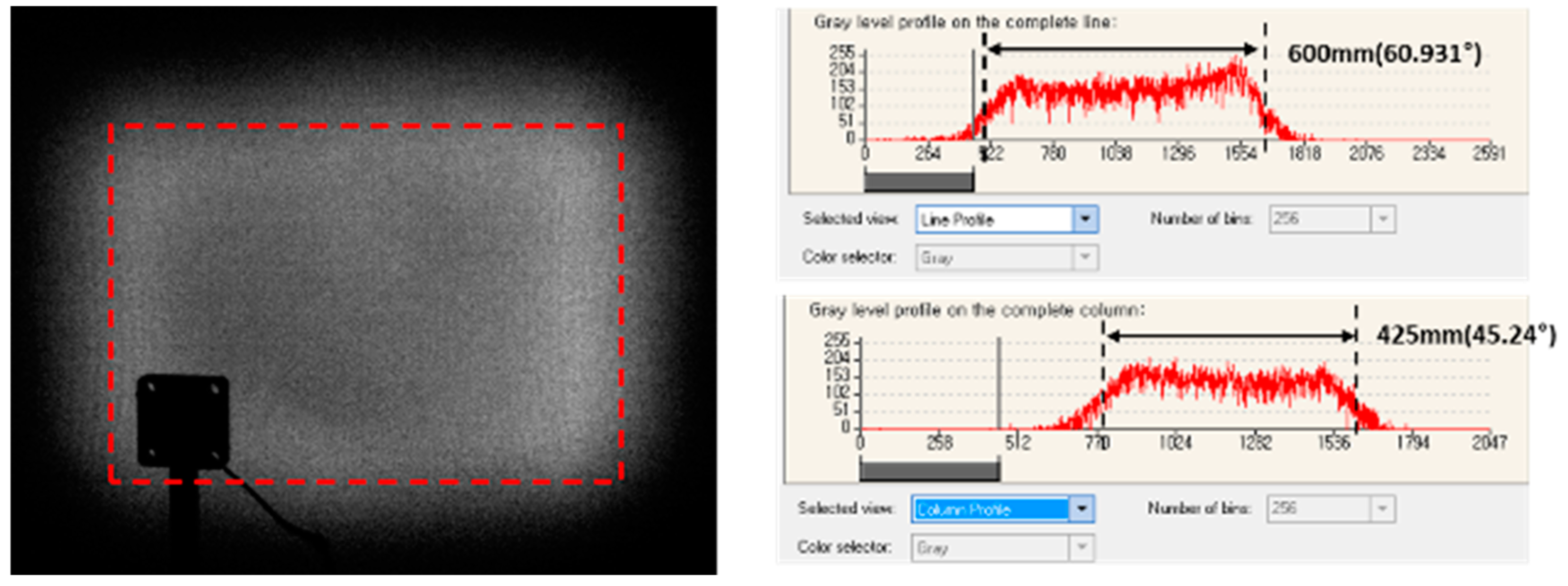
| Sag (Horizontal) | Sag (Vertical) | Max. Length (Horizontal) | Max. Length (Vertical) | |||||
|---|---|---|---|---|---|---|---|---|
| Unit: µm | Master | Replica | Master | Replica | Master | Replica | Master | Replica |
| Micro Lens #1 | 28.9 | 26.7 | 28.6 | 26.7 | 12.2 | 11.9 | 16.3 | 15.6 |
| Micro Lens #2 | 26.2 | 24.1 | 25.9 | 24.1 | 9.5 | 9.4 | 16.4 | 15.4 |
| Micro Lens #3 | 23.9 | 21.7 | 23.9 | 21.7 | 7.1 | 6.9 | 15.8 | 14.6 |
| Material Name | Volume Shrinkage (%) | Reflective Index | |
|---|---|---|---|
| Resin #1 | GPR-402 1 | 7.5–8 | 1.471 |
| Resin #2 | OM 625 2 | 2.5–3 | 1.572 |
| Resin #3 | OrmoComp 3 | 5–7 | 1.520 |
| Resin #4 | OrmoClear FX 3 | 3–5 | 1.555 |
Publisher’s Note: MDPI stays neutral with regard to jurisdictional claims in published maps and institutional affiliations. |
© 2020 by the authors. Licensee MDPI, Basel, Switzerland. This article is an open access article distributed under the terms and conditions of the Creative Commons Attribution (CC BY) license (http://creativecommons.org/licenses/by/4.0/).
Share and Cite
Kim, M.; Oh, E.S.; Kwak, M.K. Shrinkage-Considered Mold Design for Improvement of Micro/Nano-Structured Optical Element Performance. Micromachines 2020, 11, 941. https://doi.org/10.3390/mi11100941
Kim M, Oh ES, Kwak MK. Shrinkage-Considered Mold Design for Improvement of Micro/Nano-Structured Optical Element Performance. Micromachines. 2020; 11(10):941. https://doi.org/10.3390/mi11100941
Chicago/Turabian StyleKim, Minsu, Eun Song Oh, and Moon Kyu Kwak. 2020. "Shrinkage-Considered Mold Design for Improvement of Micro/Nano-Structured Optical Element Performance" Micromachines 11, no. 10: 941. https://doi.org/10.3390/mi11100941
APA StyleKim, M., Oh, E. S., & Kwak, M. K. (2020). Shrinkage-Considered Mold Design for Improvement of Micro/Nano-Structured Optical Element Performance. Micromachines, 11(10), 941. https://doi.org/10.3390/mi11100941





